Abstract
1. At a concentration of 2·5 mM in the external solution, Cs ions reduced K efflux in muscles incubated in Na media. This effect was demonstrated in the presence or absence of 2·5 mM-K and in the presence or absence of 10-4 M ouabain.
2. In Ringer solution in which NaCl was replaced by an osmotic equivalent of MgCl2, external Cs ions increased K efflux if the solution was K-free and decreased K efflux if the solution contained 2·5 mM-K.
3. External Cs ions reduced the inward rate of leakage of Na ions into muscle cells by about 25% when the medium was K-free and contained 10-5 M ouabain.
4. The effects of 2·5 mM-K ions and 2·5 mM-Cs ions on the muscle fibre membrane potential were about the same. The influence of Cs ions on K efflux cannot be explained by changes in the resting membrane potential.
5. The results suggest that a large part of the K efflux from muscle cells is mediated by a K:K exchange mechanism that is inhibited by external Cs ions.
6. The results also suggest that a smaller part of the K efflux is due to K:Na exchange that is also inhibited by external Cs ions.
7. In the absence of either external K or Na ions for internal K to exchange with, Cs ions promote a small amount of K exchange, perhaps via both mechanisms.
Full text
PDF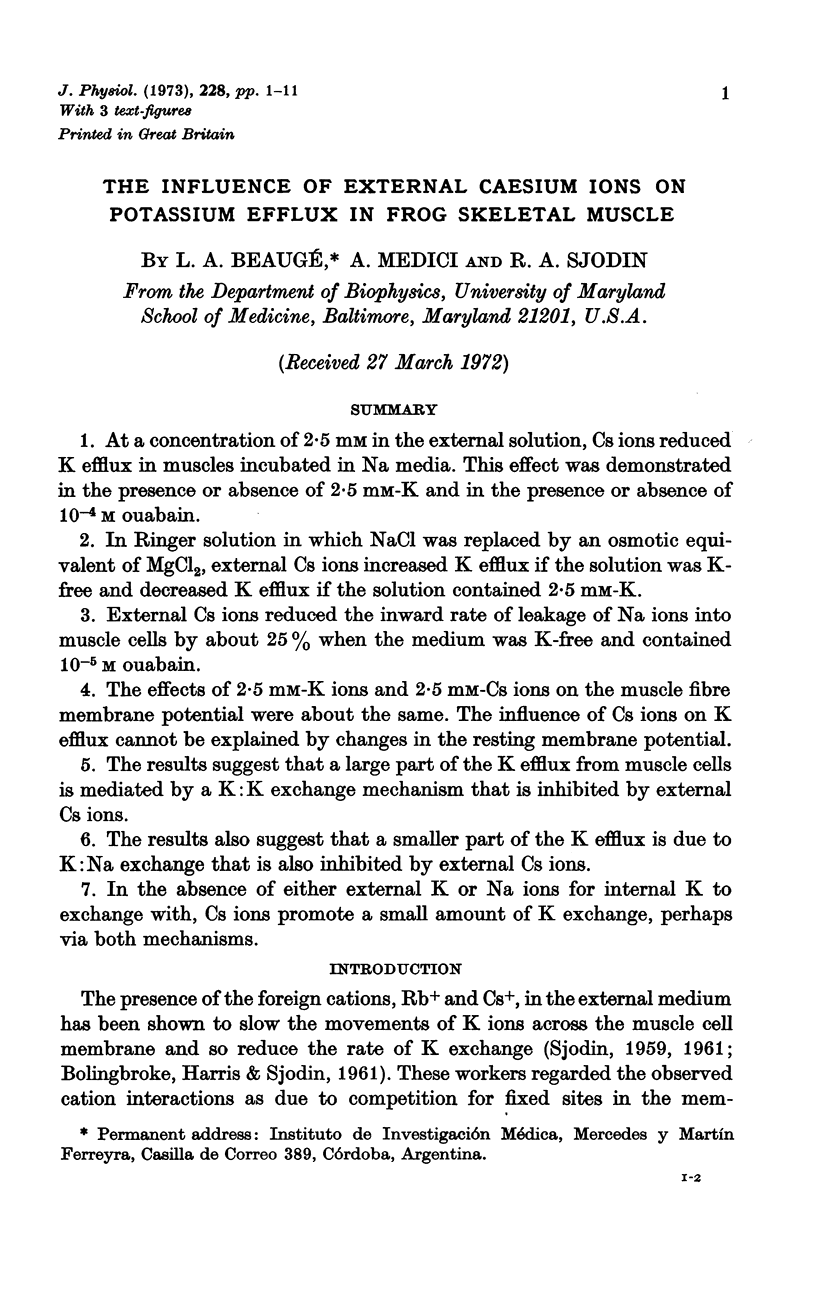
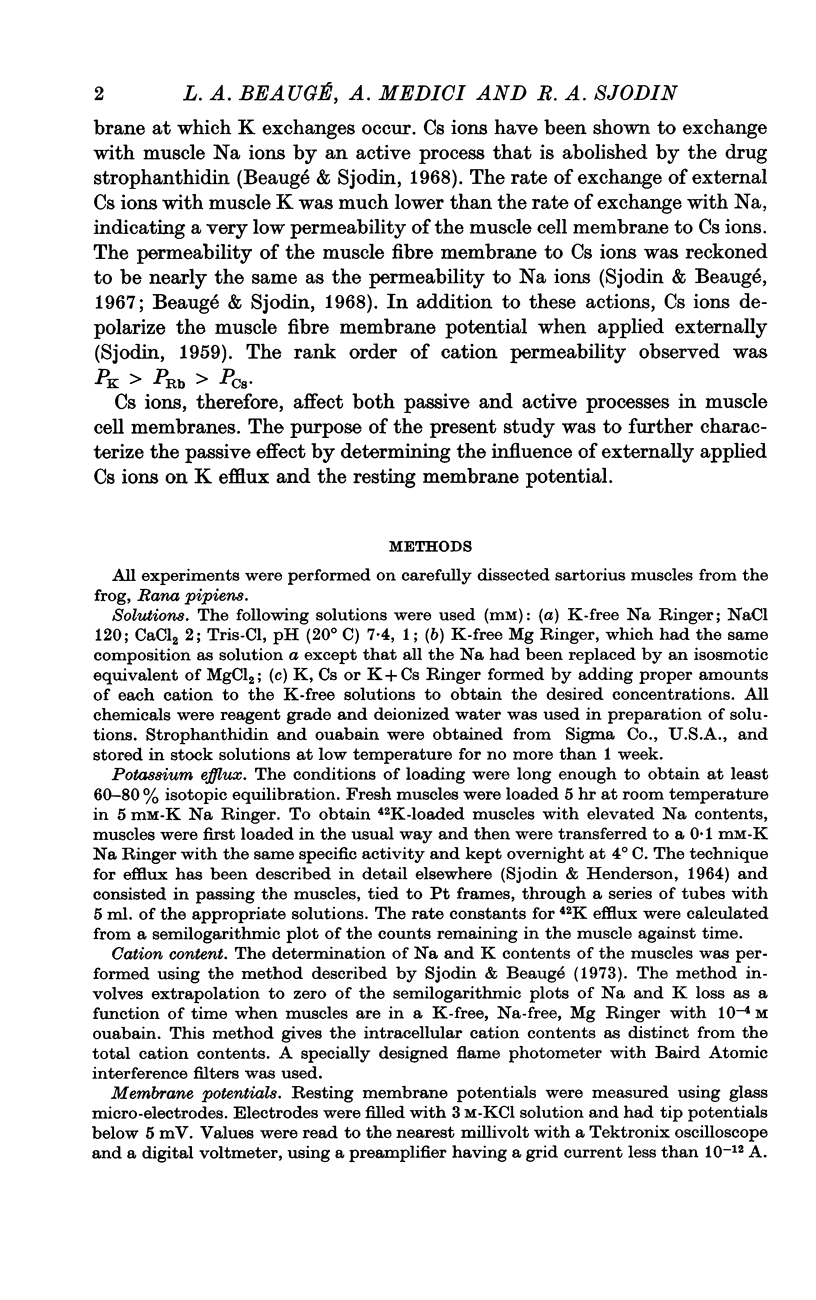
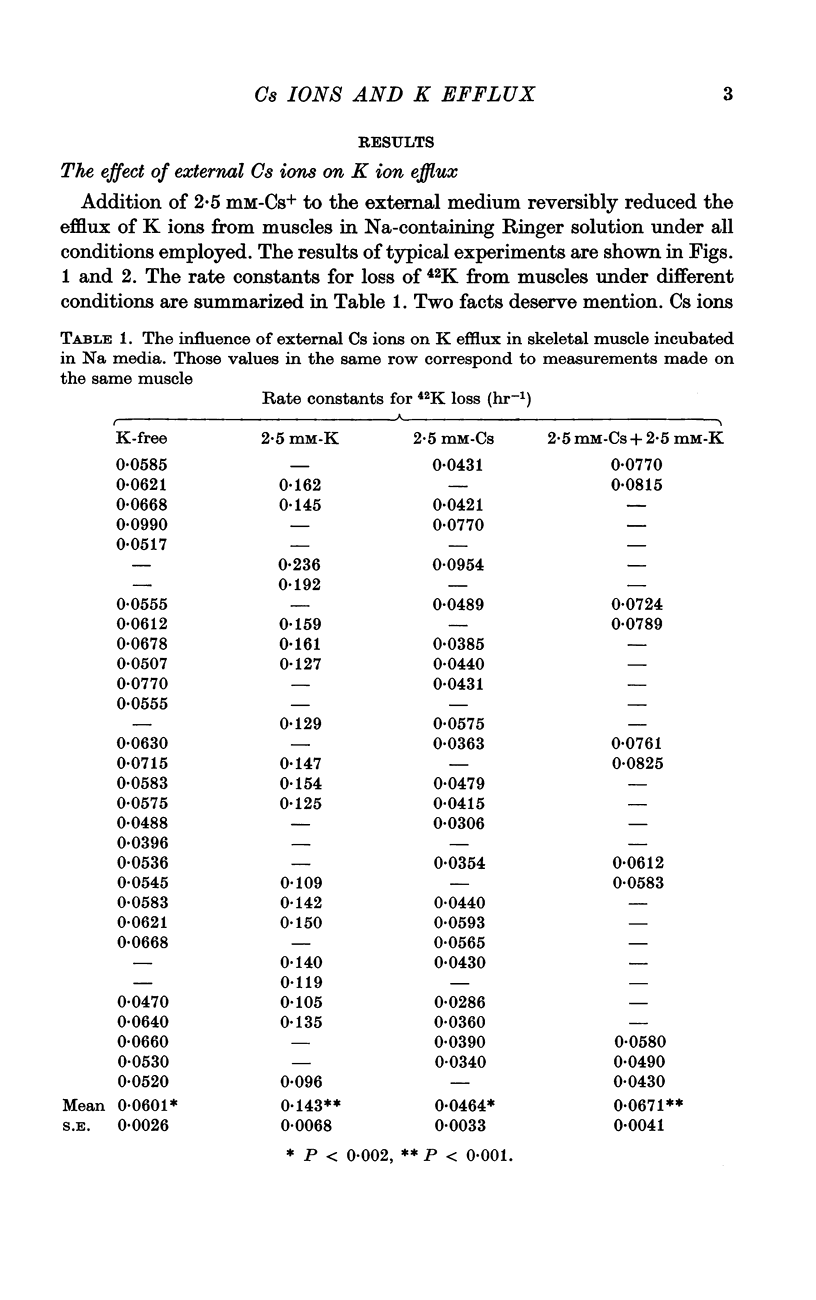
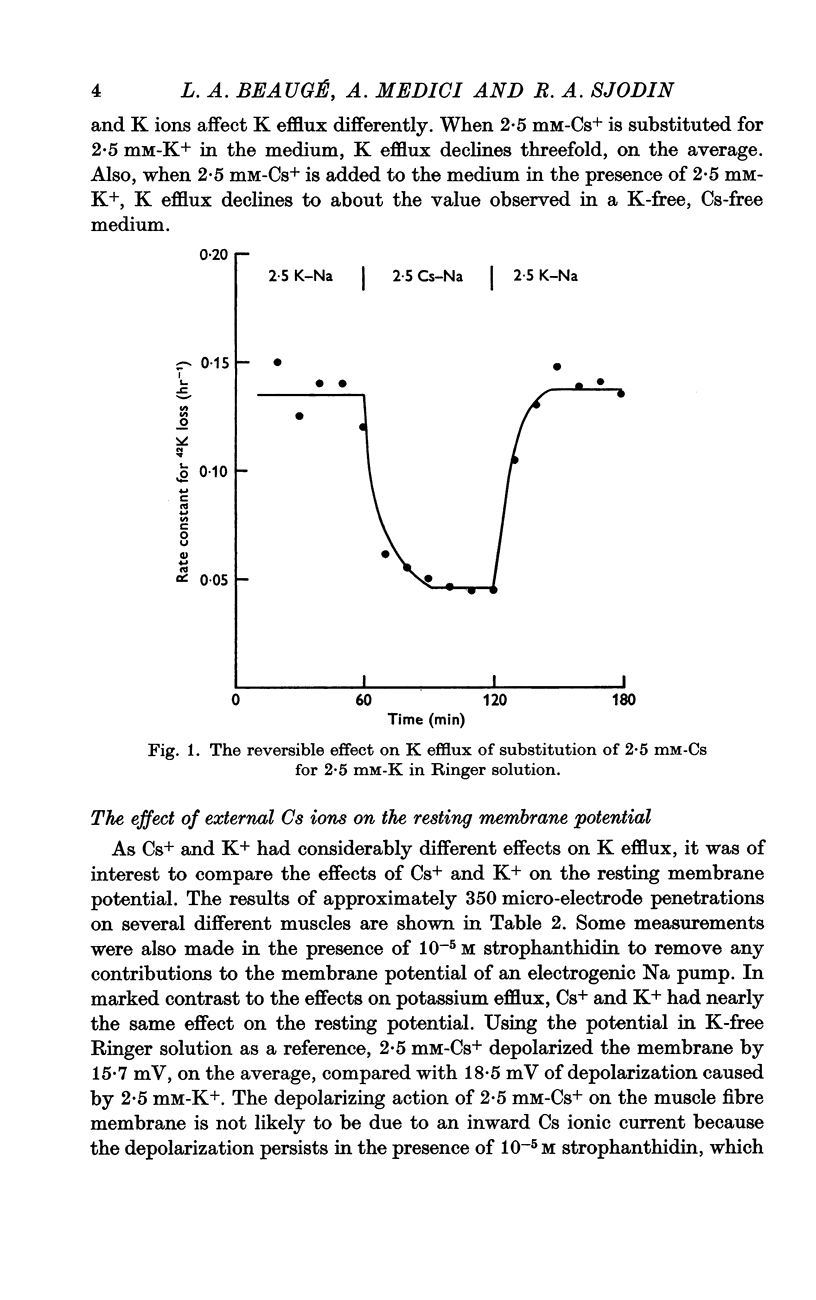
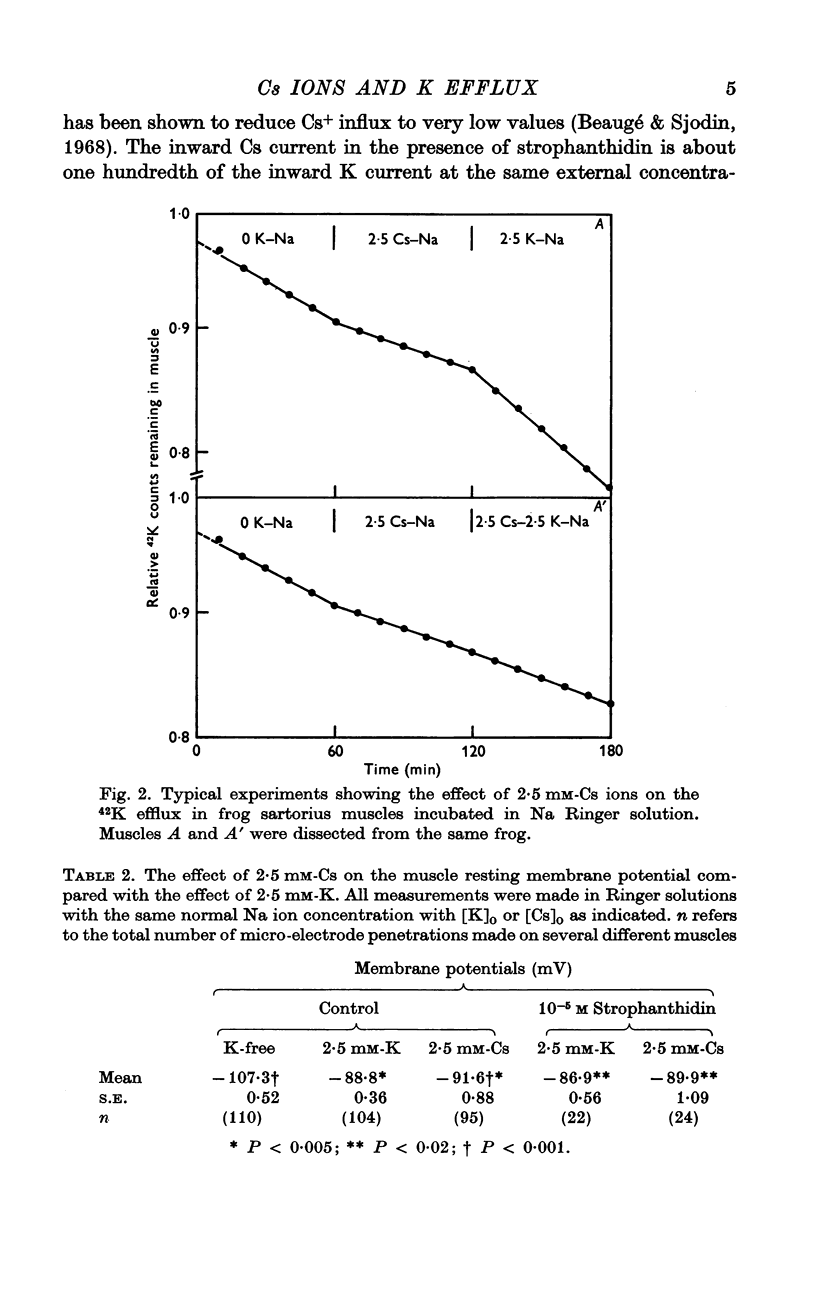
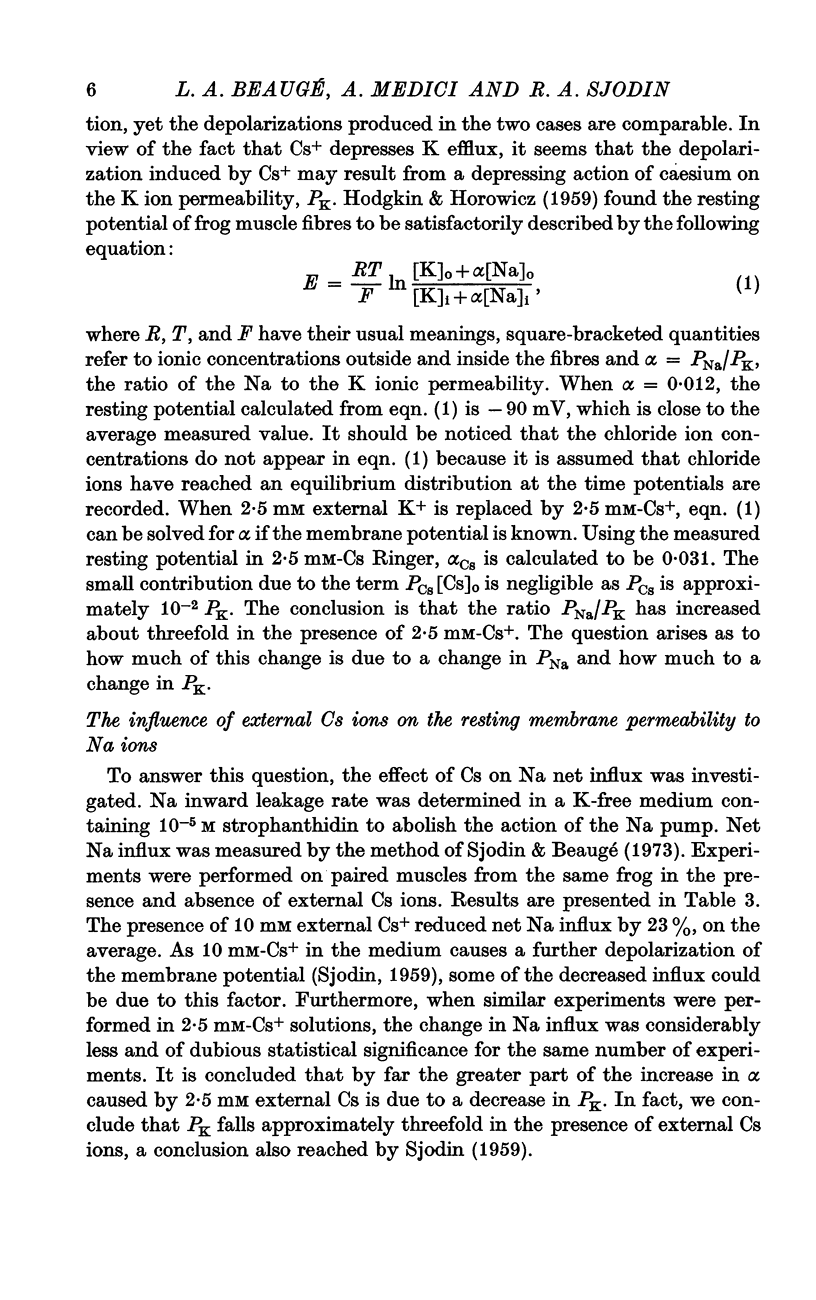
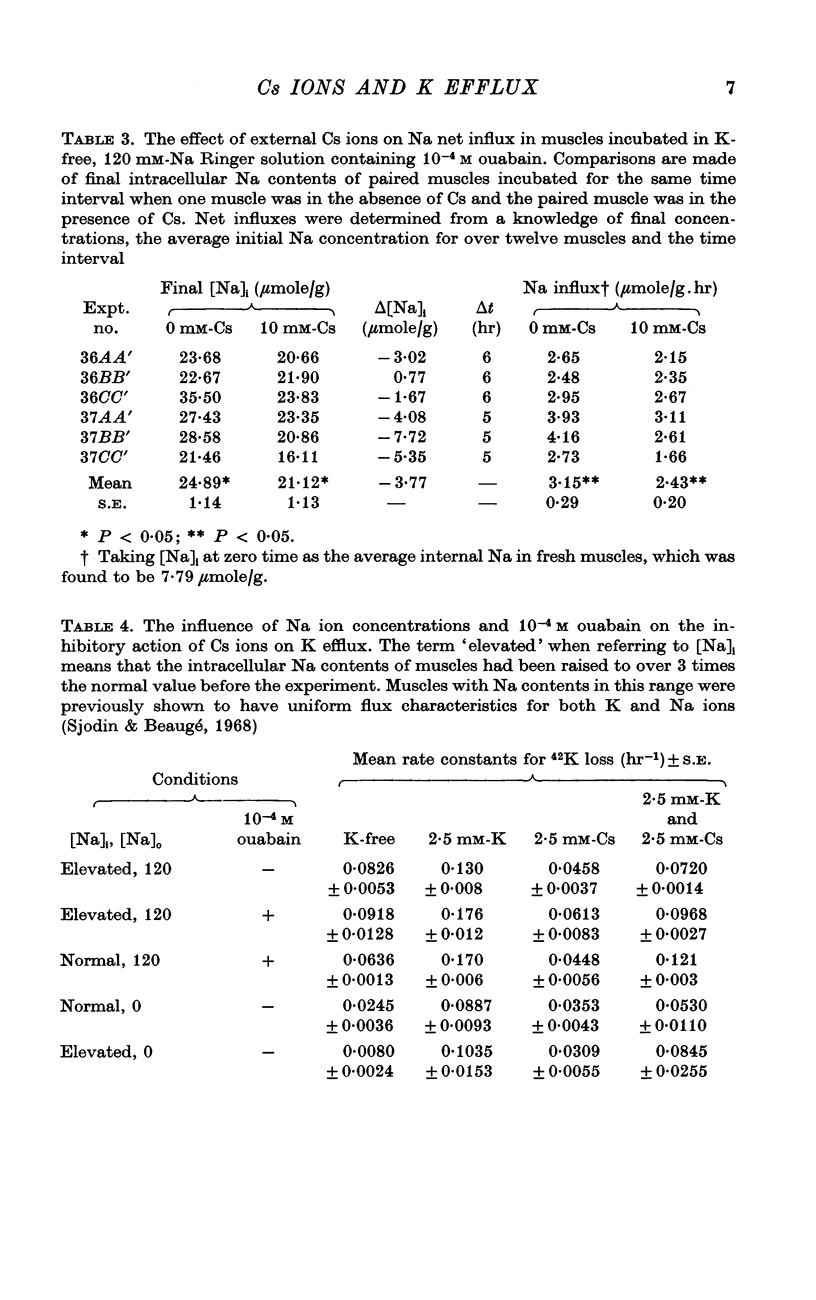
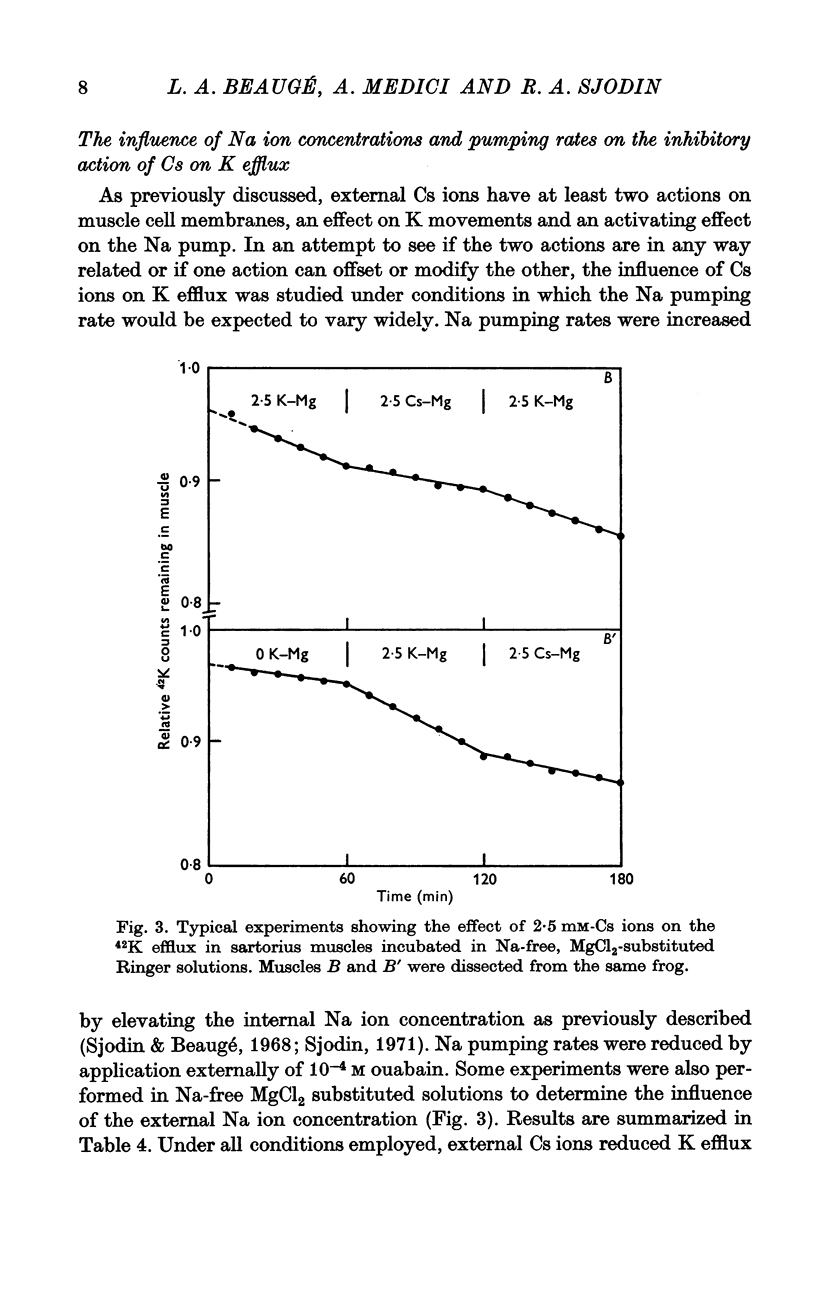
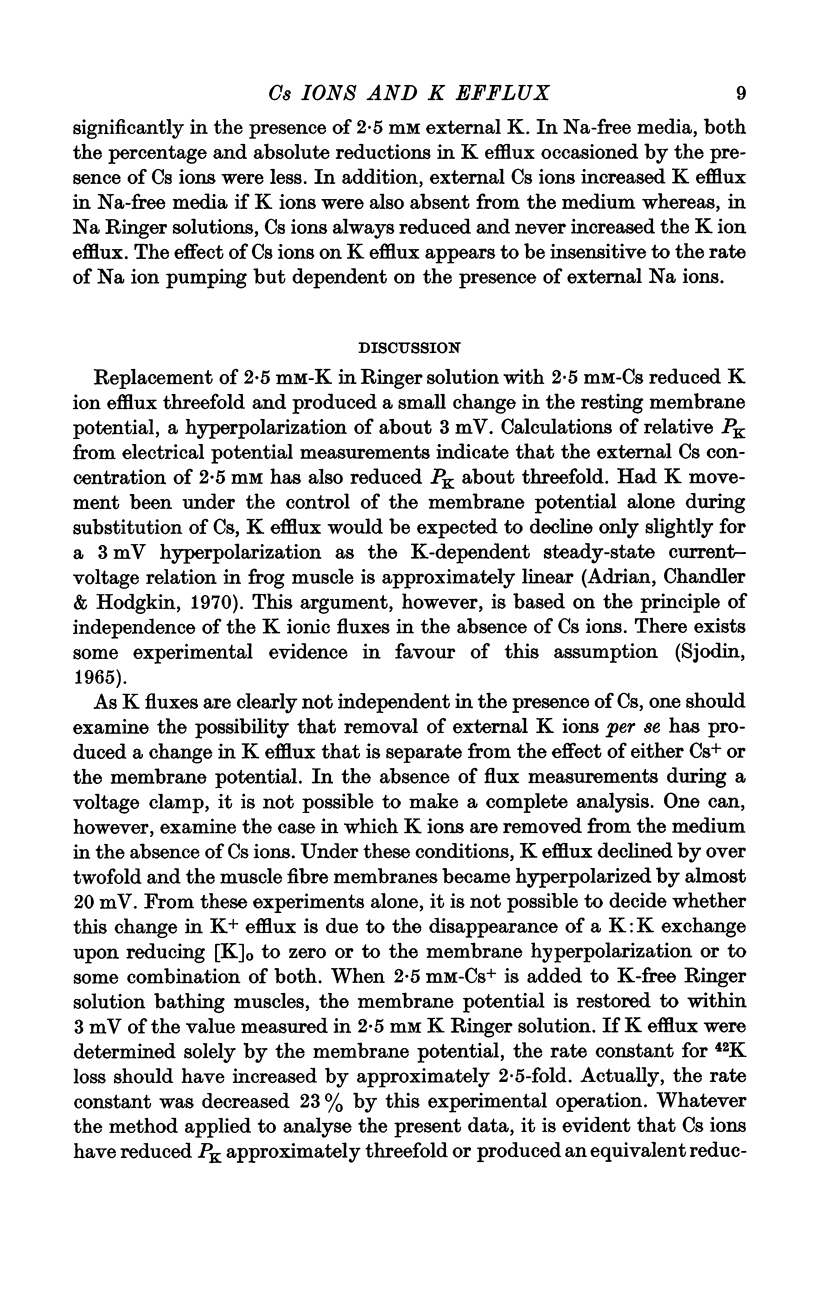
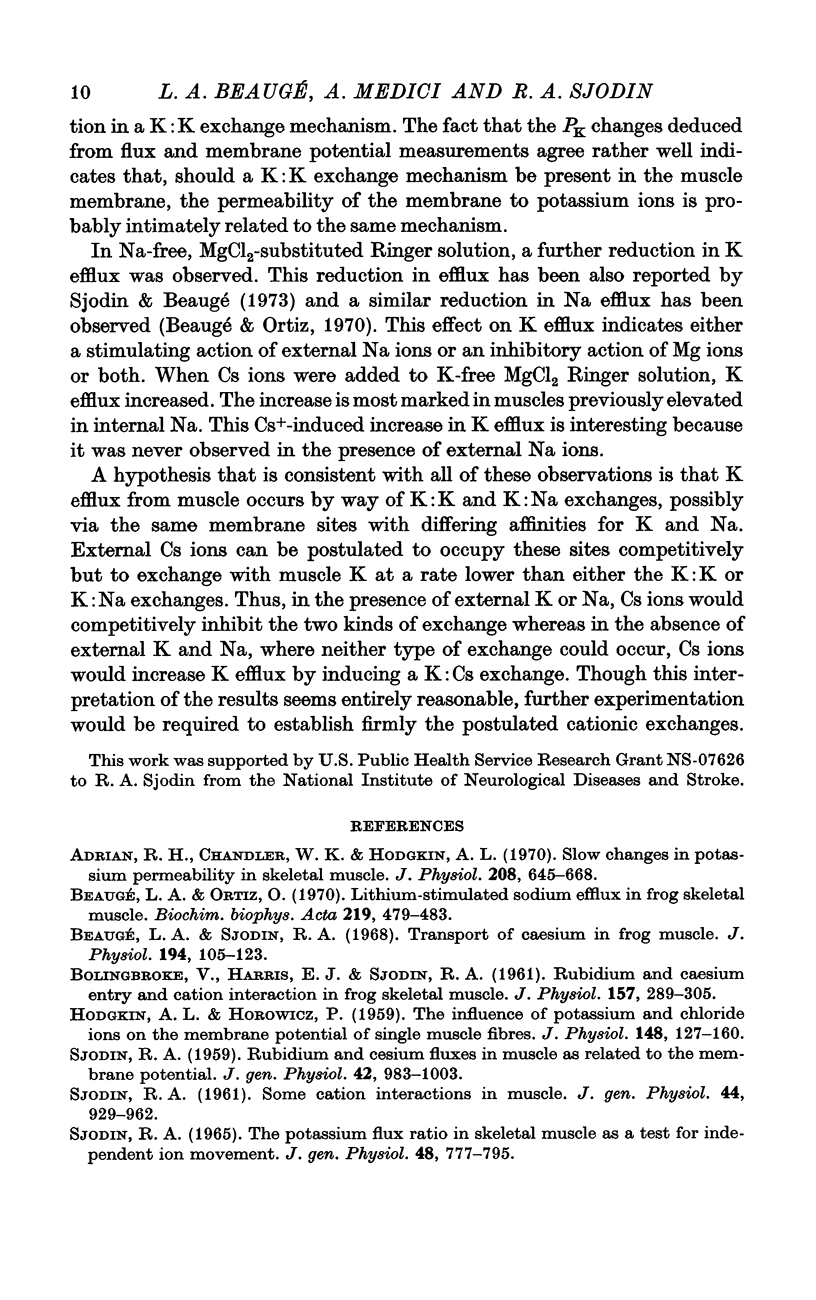
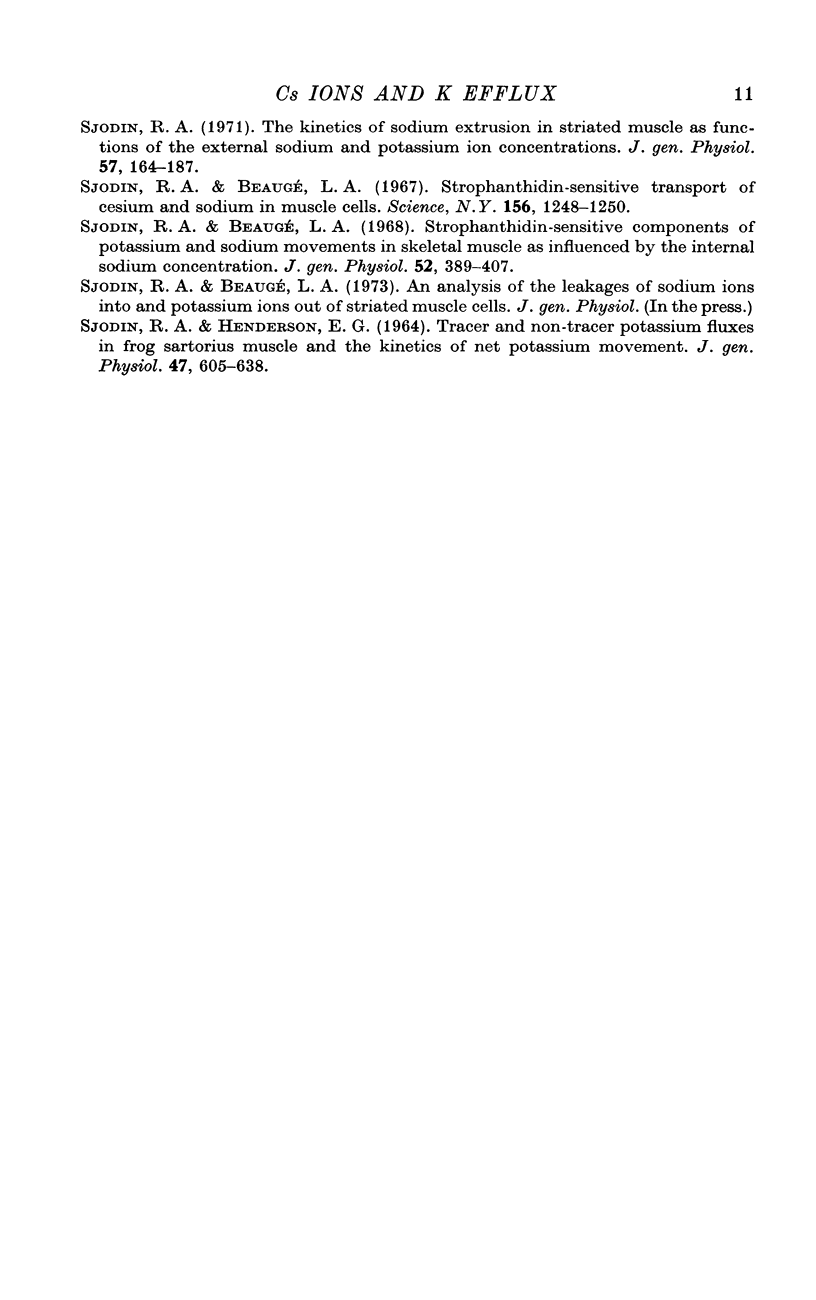
Selected References
These references are in PubMed. This may not be the complete list of references from this article.
- Adrian R. H., Chandler W. K., Hodgkin A. L. Slow changes in potassium permeability in skeletal muscle. J Physiol. 1970 Jul;208(3):645–668. doi: 10.1113/jphysiol.1970.sp009140. [DOI] [PMC free article] [PubMed] [Google Scholar]
- Beaugé L. A., Ortiz O. Lithium-stimulated sodium efflux in frog skeletal muscle. Biochim Biophys Acta. 1970 Dec 1;219(2):479–483. doi: 10.1016/0005-2736(70)90226-9. [DOI] [PubMed] [Google Scholar]
- Beaugé L. A., Sjodin R. A. Transport of caesium in frog muscle. J Physiol. 1968 Jan;194(1):105–123. doi: 10.1113/jphysiol.1968.sp008397. [DOI] [PMC free article] [PubMed] [Google Scholar]
- Bolingbroke V., Harris E. J., Sjodin R. A. Rubidium and caesium entry, and cation interaction in frog skeletal muscle. J Physiol. 1961 Jul;157(2):289–305. doi: 10.1113/jphysiol.1961.sp006722. [DOI] [PMC free article] [PubMed] [Google Scholar]
- HODGKIN A. L., HOROWICZ P. The influence of potassium and chloride ions on the membrane potential of single muscle fibres. J Physiol. 1959 Oct;148:127–160. doi: 10.1113/jphysiol.1959.sp006278. [DOI] [PMC free article] [PubMed] [Google Scholar]
- SJODIN R. A., HENDERSON E. G. TRACER AND NON-TRACER POTASSIUM FLUXES IN FROG SARTORIUS MUSCLE AND THE KINETICS OF NET POTASSIUM MOVEMENT. J Gen Physiol. 1964 Mar;47:605–638. doi: 10.1085/jgp.47.4.605. [DOI] [PMC free article] [PubMed] [Google Scholar]
- SJODIN R. A. Rubidium and cesium fluxes in muscle as related to the membrane potential. J Gen Physiol. 1959 May 20;42(5):983–1003. doi: 10.1085/jgp.42.5.983. [DOI] [PMC free article] [PubMed] [Google Scholar]
- SJODIN R. A. THE POTASSIUM FLUX RATIO IN SKELETAL MUSCLE AS A TEST FOR INDEPENDENT ION MOVEMENT. J Gen Physiol. 1965 May;48:777–795. [PMC free article] [PubMed] [Google Scholar]
- Sjodin R. A., Beaugé L. A. Strophanthidin-sensitive components of potassium and sodium movements in skeletal muscle as influenced by the internal sodium concentration. J Gen Physiol. 1968 Sep;52(3):389–407. doi: 10.1085/jgp.52.3.389. [DOI] [PMC free article] [PubMed] [Google Scholar]
- Sjodin R. A., Beaugé L. A. Strophanthidin-sensitive transport of cesium and sodium in muscle cells. Science. 1967 Jun 2;156(3779):1248–1250. doi: 10.1126/science.156.3779.1248. [DOI] [PubMed] [Google Scholar]
- Sjodin R. A. Some Cation Interactions in Muscle. J Gen Physiol. 1961 May 1;44(5):929–962. doi: 10.1085/jgp.44.5.929. [DOI] [PMC free article] [PubMed] [Google Scholar]
- Sjodin R. A. The kinetics of sodium extrusion in striated muscle as functions of the external sodium and potassium ion concentrations. J Gen Physiol. 1971 Feb;57(2):164–187. doi: 10.1085/jgp.57.2.164. [DOI] [PMC free article] [PubMed] [Google Scholar]


